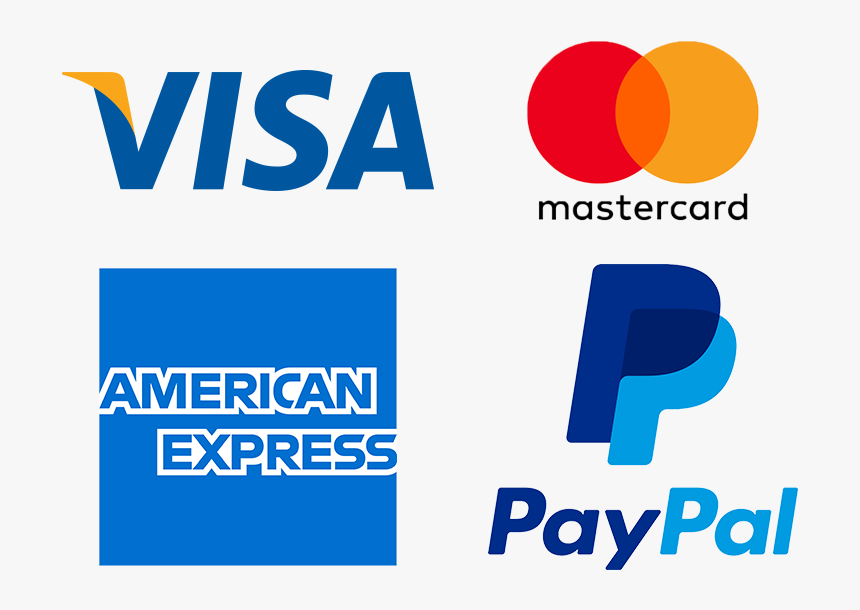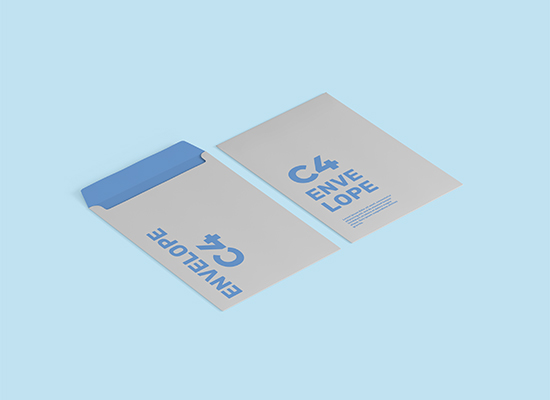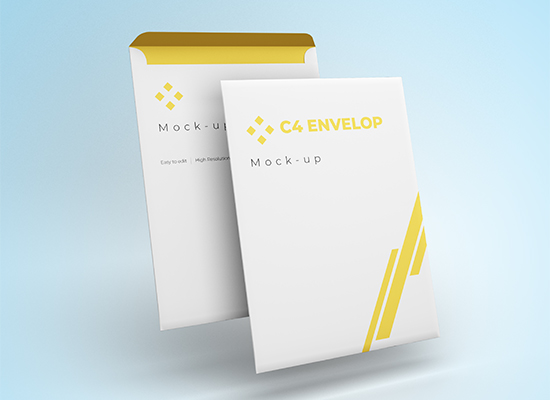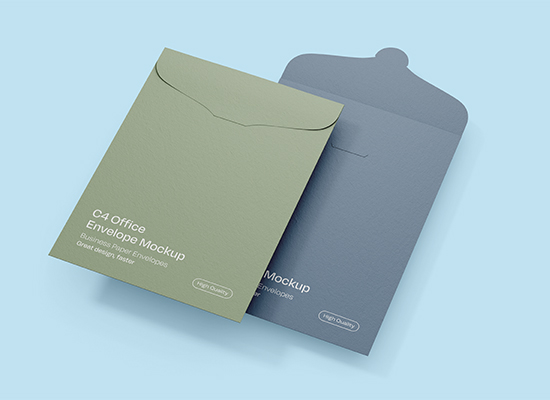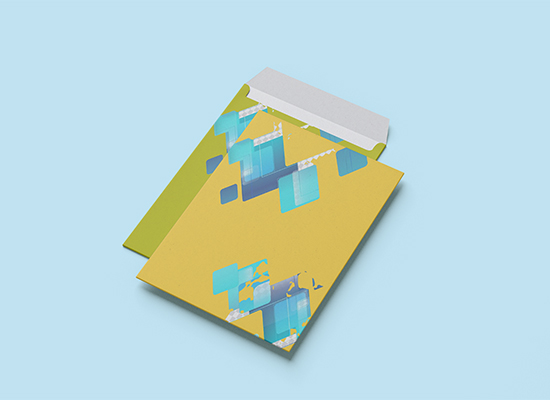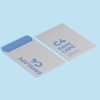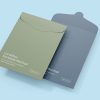Short Description
C4 Envelope
Related Products
Additional Information
Design C4 envelopes for a spacious, professional mailing solution. Perfect for sending A4 documents, brochures, and large presentations flat.
C4 Envelopes: A Detailed Overview
C4 envelopes are a widely used size for mailing large documents, especially those that need to be sent without folding. Measuring 229 mm x 324 mm (9.0 inches x 12.8 inches), a C4 envelope is designed to fit an A4-sized sheet of paper (210 mm x 297 mm) flat, making it an essential tool for businesses, offices, and personal correspondence where maintaining the integrity of documents is important.
In this guide, we will explore the dimensions, uses, materials, designs, and advantages of C4 envelopes, as well as important considerations when choosing them for your mailing needs.
Dimensions and Purpose of C4 Envelopes
The C4 envelope is part of the ISO 269 international envelope standard, specifically designed to hold A4-sized paper without folding. An A4 sheet fits perfectly inside a C4 envelope, making it ideal for sending documents like:
- Contracts
- Certificates
- Reports
- Brochures
- Resumes
- Legal paperwork
Unlike smaller envelope sizes like C5 or C6, which require folding larger documents, the C4 envelope maintains the pristine condition of documents by keeping them flat. This is essential when sending formal or important materials where folds could detract from the presentation or readability.
Common Uses of C4 Envelopes
C4 envelopes are a staple for various purposes, particularly in professional and administrative settings. Here are the most common uses:
- Business and Corporate Correspondence:
- C4 are essential for sending business letters, reports, invoices, and contracts. When formality and professionalism are paramount, C4 allow documents to be sent flat, avoiding creases or folds that could be unprofessional or difficult to handle.
- In legal and governmental offices, C4 envelopes are used to send official papers, policy documents, and forms, where folding could compromise the presentation or structure of the content.
- Certificates and Diplomas:
- Certificates, awards, diplomas, and other formal recognitions are often sent using C4 envelopes. These documents are best kept flat to preserve their original form and ensure they arrive at their destination looking pristine. C4 envelopes protect these materials during transit, keeping them intact.
- Marketing Materials and Brochures:
- Companies and organizations use C4 for sending high-quality marketing materials, such as brochures, catalogs, flyers, or booklets. The larger size allows these materials to be sent without folding, making a strong impression on potential clients or customers.
- Mailing campaigns that rely on visual impact can take advantage of the C4 envelope’s size to hold eye-catching content, allowing for maximum visibility and presentation.
- Magazines and Booklets:
- C4 envelopes are perfect for sending thin magazines, booklets, or annual reports, as these items often fit snugly within the envelope without requiring folding. This makes the C4 an excellent choice for subscription-based businesses or organizations that mail out regular publications.
- Resumes and Job Applications:
- Job seekers often prefer to send their resumes, cover letters, and portfolios in C4 especially when applying for professional positions. Presenting these documents without folds or creases ensures they look polished and professional, leaving a positive impression on employers.
- Photographs and Artwork:
- Photographers, artists, and designers often use C4 to send flat prints, artwork, or photographs. The envelope’s size and structure help protect the contents during transit, ensuring that visual pieces arrive without damage.
Materials and Styles of C4 Envelopes
C4 envelopes come in a variety of materials and finishes, catering to different preferences and requirements. Here are some common types:
- Materials:
- Standard Paper: The most common material for C4 envelopes is high-quality standard paper, usually ranging between 80 gsm and 120 gsm (grams per square meter). This weight is ideal for general business correspondence, as it strikes a balance between durability and affordability.
- Heavyweight Paper: For more formal or premium mailings, C4 envelopes are available in heavier weights, typically 120 gsm to 180 gsm. These envelopes offer greater protection and have a more luxurious feel, making them ideal for important documents like legal contracts or diplomas.
- Recycled Paper: Eco-conscious businesses and individuals often opt for recycled C4 envelopes. Made from post-consumer waste, these envelopes provide the same functionality as standard paper while promoting sustainability.
- Colors and Designs:
- White or Cream: The most common color choices for C4 envelopes are white or cream, which provide a clean and professional appearance suitable for formal business or personal correspondence.
- Colored Envelopes: For more creative uses, C4 come in a variety of colors. These are often used for marketing materials, event invitations, or branding purposes, where the color of the envelope is an important part of the visual presentation.
- Textured Envelopes: Some C4 feature textured finishes, adding a tactile element to the experience. These are often used for high-end mailings, such as wedding invitations or premium marketing materials, where the texture complements the quality of the content inside.
- Finishes:
- Matte: Matte C4 envelopes are commonly used for professional and business correspondence. The non-reflective finish gives a polished, understated look, ideal for formal documents.
- Glossy: Glossy finishes provide a sleek and shiny appearance, making the envelope stand out. These are typically used for marketing campaigns or special events where visual appeal is important.
- Metallic: Metallic finishes, available in colors like gold and silver, are often used for high-end invitations or luxury branding, where a touch of glamour and exclusivity is desired.
- Window vs. Non-Window:
- Window Envelopes: C4 window envelopes feature a transparent window that allows the recipient’s address to be visible through the envelope. This is useful for business mailings where the address is pre-printed on the document inside, saving time and resources.
- Non-Window Envelopes: Non-window C4 envelopes offer full coverage and are often used for personal documents, certificates, and other items that require privacy or a more formal presentation.
Seal Types for C4 Envelopes
There are three common types of sealing methods for C4 envelopes, each offering different levels of convenience and security:
- Gummed Flap: The traditional gummed flap requires moistening to seal the envelope. This method is commonly used for everyday mail and business correspondence, though it can be less convenient for bulk mailings.
- Self-Seal or Peel-and-Seal: Self-seal envelopes feature a strip of adhesive covered by a protective paper strip, which is peeled off to seal the envelope. This is a popular option for time-saving bulk mailings, as it allows for quick and easy sealing without the need for moisture.
- Press-Seal: Press-seal envelopes, also known as tape-seal, have pre-applied adhesive that only requires pressing down the flap to close. This method is fast and mess-free, making it a convenient option for both personal and business use.
Advantages of C4 Envelopes
- No Folding Required: One of the key advantages of C4 is that they allow you to send A4 documents flat, without folding. This is crucial for sending important documents where appearance and legibility matter.
- Versatility: C4 envelopes can accommodate a variety of items, including reports, booklets, brochures, and certificates, making them suitable for both professional and personal use.
- Customization: Businesses and individuals can customize C4 with logos, branding, or unique colors to enhance their professional image or create a memorable impression.
- Protective: C4 envelopes provide excellent protection for documents, ensuring that contents remain intact and undamaged during transit.
- Professional Appearance: Sending documents flat in a C4 looks more polished and professional, especially for business correspondence or important mailings like job applications or official paperwork.
Limitations of C4 Envelopes
While C4 envelopes are highly functional, they do come with a few limitations:
- Postage Costs: Due to their larger size, C4 can incur higher postage costs compared to smaller envelope sizes like C5 or DL. This is especially important to consider for bulk mailings.
- Limited Bulk Capacity: While C4 envelopes are spacious, they have limited capacity when it comes to bulkier items or thicker booklets. For more substantial materials, a padded or gusseted envelope may be necessary.
Conclusion
C4 envelopes are an essential tool for businesses, offices, and individuals who need to send documents, certificates, and marketing materials without folding. Their larger size ensures that important papers arrive flat and in pristine condition, making them ideal for professional correspondence, legal documents, and special event invitations. With a range of materials, finishes, and sealing options, C4 offer both versatility and protection, ensuring that your correspondence is both professional and polished. Whether for business, personal use, or special occasions, the C4 envelope remains a reliable and indispensable part of modern communication.
Get Your Quote
My Account
About Us
Our Products
Contact
Follow Us On
We Accept
